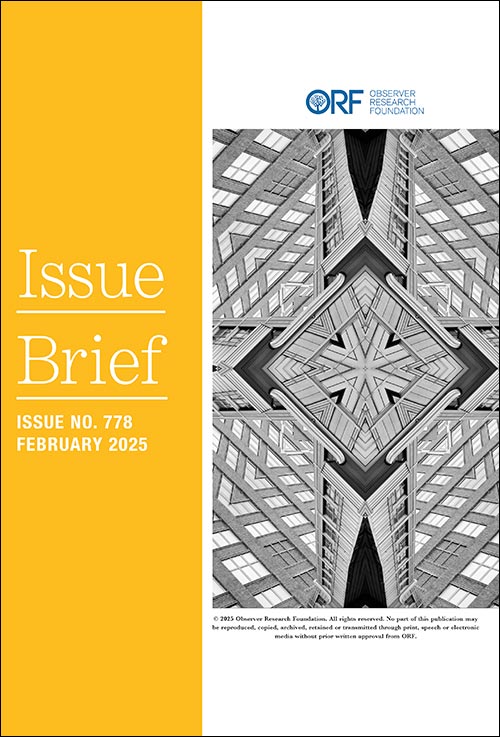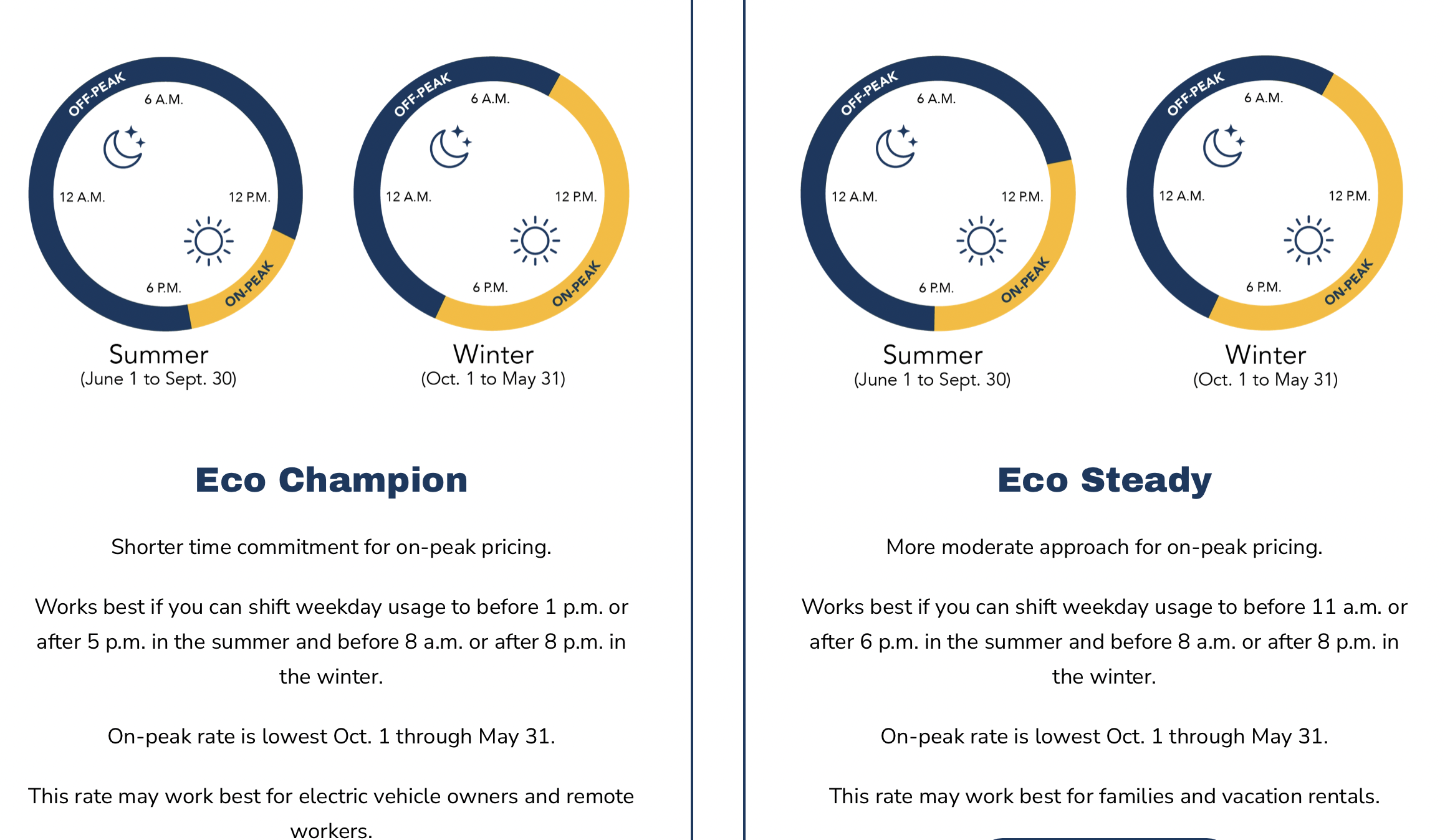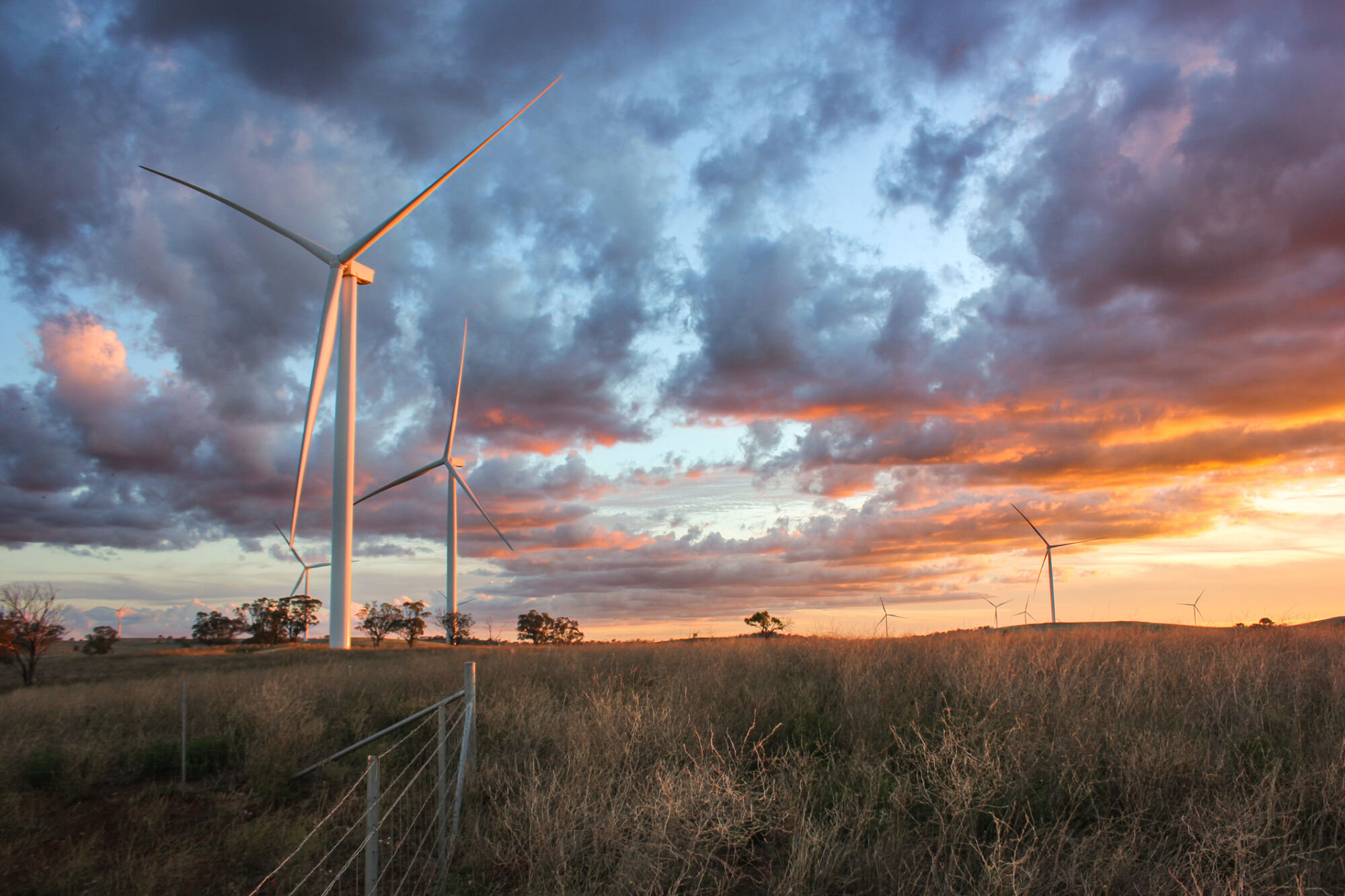Financing India’s climate future: From fragmented flows to systemic resilience – Institute for Energy Economics and Financial Analysis (IEEFA)

Report on Financing Climate-Resilient Infrastructure for Sustainable Development
Introduction: Climate Risks and the Imperative for Sustainable Development
Financial institutions face significant portfolio risks from climate change, categorized as physical and transition risks. Physical risks emanate from climate-related disasters, while transition risks arise from the global shift towards a low-carbon economy. This transition necessitates the development of resilient infrastructure, directly supporting the achievement of several Sustainable Development Goals (SDGs).
A critical component of this transition is ensuring it is a “Just Transition,” a principle that aligns with SDG 8 (Decent Work and Economic Growth) and SDG 10 (Reduced Inequalities). This ensures that the move to a low-carbon economy mitigates, rather than exacerbates, existing socio-economic disparities. The scaling of clean energy investment is fundamental to achieving SDG 13 (Climate Action) and requires embedding resilience into all mitigation financing.
Integrating Climate Risk into Financial Frameworks for SDG Achievement
Adoption of Global Disclosure Standards
Financial institutions are increasingly integrating climate risk disclosure standards, such as the Task Force on Climate-related Financial Disclosures (TCFD) and the Glasgow Financial Alliance for Net Zero (GFANZ) principles. These frameworks mandate the assessment of climate-related risks in lending and investment portfolios, steering capital towards mitigation assets like renewable energy, which is central to SDG 7 (Affordable and Clean Energy).
Vulnerabilities in Renewable Energy Infrastructure
While crucial for mitigation, renewable energy infrastructure is not immune to physical climate risks. This introduces new vulnerabilities into financial portfolios. For instance, solar and wind farms are susceptible to location-specific climate events like cyclones and heatwaves, which can impact their operational efficiency and longevity. Addressing these vulnerabilities is essential for ensuring the long-term viability of investments in SDG 7 and building resilient infrastructure as per SDG 9 (Industry, Innovation, and Infrastructure).
Strategies for Building Resilient Infrastructure and Energy Systems
Enhancing Durability, Diversification, and Decentralisation
In response to climate vulnerabilities, developers are innovating to create climate-resilient infrastructure, a core target of SDG 9. Key strategies include:
- Engineering wind turbines to withstand higher gust loads.
- Utilising elevated solar panel mounts in flood-prone regions.
- Shifting towards distributed generation, such as rooftop solar and microgrids.
This move towards decentralisation enhances energy system resilience, reduces transmission losses, and ensures reliability during grid failures, contributing to both SDG 7 and SDG 11 (Sustainable Cities and Communities).
Innovative Financial and Insurance Mechanisms
Financing these innovations requires collaborative models. Blended finance, combining private capital with government and non-government concessional finance, is vital for scaling up technologies like rooftop solar. Concurrently, the insurance industry is developing parametric products to protect these assets against climate-induced losses, demonstrating a multi-stakeholder approach consistent with SDG 17 (Partnerships for the Goals).
Transitioning from Asset-Centric to Systemic Financing Models
Limitations of Current Mitigation Finance
Current mitigation finance often focuses on individual asset-level investments in solar and wind generation. This fragmented approach limits the ability of financiers to assess interdependencies and manage climate risks in an integrated, portfolio-wide manner. It often overlooks the broader ecosystem required for these assets to function resiliently.
The Case for Systemic Financing
A systemic financing approach is required to effectively mitigate climate risk and accelerate decarbonisation in line with SDG 13. This model directs capital towards interconnected systems rather than isolated assets. Priority areas for systemic investment include:
- Grid flexibility and modernisation
- Energy storage solutions
- Demand-side management
- Resilient supply chains for clean energy components
- Interconnection between clean energy assets
This holistic strategy addresses structural barriers to decarbonisation and enhances the risk-adjusted return profile for investors by prioritising the climate resilience of the entire clean energy ecosystem.
Enabling Tools for Systemic and Resilient Investment
Data, Taxonomies, and Budgeting Frameworks
Operationalising a systemic financing approach requires robust enabling tools. The Reserve Bank of India (RBI) has launched initiatives like the Reserve Bank Climate Risk Information System (RBI-CRIS) to provide commercial banks with essential data for assessing climate-related financial risks. Such tools are fundamental for planning and financing adaptation measures.
Green Budgeting and Climate Finance Taxonomies
Green budgeting and climate finance taxonomies are vital for mobilising and tracking investments aligned with climate objectives. Green budgeting embeds resilience into public financial management, prioritising spending on projects that strengthen infrastructure and communities against climate shocks. A clear taxonomy that defines “resilient” financial activities provides clarity to investors and helps align financial flows with National Adaptation Plans and the SDGs.
By defining activities such as renewable-powered cold chains and climate-resilient housing, a taxonomy can stimulate the development of financial products like resilience bonds and adaptation-focused loans, mobilising private capital for projects that advance SDG 9, SDG 11, and SDG 13.
Recommendations for Future Action
A Paradigm Shift in Financial Strategy
To effectively finance a climate-resilient future, a strategic shift is necessary across the financial sector. This shift must be:
- From reactive to anticipatory risk management.
- From a project-level focus to a systemic risk perspective.
- From carbon-only metrics to multi-dimensional climate value.
- From global north-centric models to local, context-specific solutions.
Fostering a Just Transition for Emerging Economies
By adopting a proactive, systemic financing approach, financial systems can better support the Just Transition required by emerging economies. This strategy is essential for navigating climate challenges while ensuring that the path to decarbonisation is equitable and aligns with the broader Sustainable Development Goals, particularly SDG 8, SDG 10, and SDG 13.
1. Which SDGs are addressed or connected to the issues highlighted in the article?
SDG 7: Affordable and Clean Energy
- The article extensively discusses the transition to a low-carbon economy, focusing on investments in renewable energy sources like solar and wind. It highlights the need to scale up clean energy, mentioning “rooftop solar and microgrids” and the financing of “mitigation assets such as renewable energy.”
SDG 9: Industry, Innovation, and Infrastructure
- A central theme is the necessity of “building resilient infrastructure that can withstand, adapt to and quickly recover from shocks.” The article provides examples of innovation, such as “elevated solar panel mounts in flood-prone zones” and “wind turbines engineered for higher gust loads,” which directly relate to developing sustainable and resilient infrastructure.
SDG 11: Sustainable Cities and Communities
- The article addresses the impact of climate disasters like “floods in north-east India” and “heatwaves in northern India” on communities. It promotes solutions that enhance community resilience, such as “distributed generation (e.g. rooftop solar and microgrids)” and the development of “climate-resilient housing.”
SDG 13: Climate Action
- This is the core SDG of the article. It covers both mitigation (shifting to a “low-carbon economy”) and adaptation (“strengthen resilience and adaptive capacity to climate-related hazards”). The text explicitly references key climate policy instruments like “National Adaptation Plans” and “Nationally Determined Contributions.”
SDG 17: Partnerships for the Goals
- The article emphasizes the collaborative effort required for the energy transition. It discusses the roles of and partnerships between “governments,” “financiers and asset managers,” “insurers,” and international bodies like the “Glasgow Financial Alliance for Net Zero (GFANZ).” The concept of “blended” finance, combining “government and non-government concessional finance” with “private capital,” is a clear example of this SDG in action.
2. What specific targets under those SDGs can be identified based on the article’s content?
SDG 7: Affordable and Clean Energy
- Target 7.2: By 2030, increase substantially the share of renewable energy in the global energy mix. The article’s focus on scaling up investments in “solar and wind generation” and deploying “rooftop solar and microgrids” directly supports this target.
- Target 7.a: By 2030, enhance international cooperation to facilitate access to clean energy research and technology… and promote investment in energy infrastructure and clean energy technology. The discussion on “systemic financing” for “grid flexibility and modernisation, storage and demand-side management” and mobilizing private capital through frameworks like GFANZ aligns with this target.
SDG 9: Industry, Innovation, and Infrastructure
- Target 9.1: Develop quality, reliable, sustainable and resilient infrastructure. The article repeatedly calls for “climate-resilient infrastructure” and highlights innovations designed for “durability and adaptability” to withstand climate disasters.
SDG 11: Sustainable Cities and Communities
- Target 11.5: By 2030, significantly reduce the number of deaths and the number of people affected and substantially decrease the direct economic losses… caused by disasters. The article addresses this by focusing on mitigating “physical risks” from “floods, droughts, cyclones” and protecting assets through resilient design and insurance products.
- Target 11.b: By 2030, substantially increase the number of cities and human settlements adopting and implementing integrated policies and plans towards… adaptation to climate change, resilience to disasters. The mention of “India’s National Adaptation Plans” and state-level “climate budget tagging” in Odisha and Kerala are direct examples of implementing this target.
SDG 13: Climate Action
- Target 13.1: Strengthen resilience and adaptive capacity to climate-related hazards and natural disasters in all countries. This is a central theme, exemplified by the call to build infrastructure that can withstand climate shocks and the development of financial tools like “resilience bonds.”
- Target 13.2: Integrate climate change measures into national policies, strategies and planning. The article cites the Reserve Bank of India’s development of “super databases” for climate risk, the creation of a “climate finance taxonomy,” and the use of “Green budgeting” as tools for integrating climate considerations into financial and national planning.
SDG 17: Partnerships for the Goals
- Target 17.3: Mobilize additional financial resources for developing countries from multiple sources. The article discusses the need for “concessional finance blended with private capital” to fund projects like rooftop solar and microgrids.
- Target 17.17: Encourage and promote effective public, public-private and civil society partnerships. The entire financing model described involves partnerships between public entities (RBI, state governments), private financial institutions (banks, investors, insurers), and developers.
3. Are there any indicators mentioned or implied in the article that can be used to measure progress towards the identified targets?
Indicators for SDG 7
- Investment in clean energy: The article states that “clean energy investment scaling into the trillions” and mentions financing for “rooftop solar and microgrids,” which can be tracked as a measure of progress.
Indicators for SDG 9 & 11
- Economic losses from disasters: The article provides a specific data point: “hail damage drove record losses of US$300-400 million for renewable energy insurers” in 2022. Tracking such climate-induced financial losses serves as an indicator of vulnerability and the need for resilience.
- Investment in resilient infrastructure: The development of financial products like “resilience bonds and adaptation-focused green loans” can be monitored to measure investment flowing towards resilient infrastructure.
Indicators for SDG 13
- Implementation of national climate policies: The article points to the existence of “India’s National Adaptation Plans” and “Nationally Determined Contributions” as an indicator of policy integration.
- Public expenditure on adaptation: The use of “climate budget tagging” by the states of Odisha and Kerala to “identify adaptation-related allocations” is a direct, measurable indicator of public funds being directed towards climate resilience.
- Development of climate risk frameworks: The launch of the “Reserve Bank Climate Risk Information System (RBI-CRIS)” and the evolution of “India’s climate finance taxonomy” are concrete indicators of progress in managing climate risk.
Indicators for SDG 17
- Mobilization of blended finance: The amount of “concessional finance blended with private capital” directed towards clean energy projects is a key indicator of successful public-private partnerships.
4. Table of SDGs, Targets, and Indicators
| SDGs | Targets | Indicators Identified in the Article |
|---|---|---|
| SDG 7: Affordable and Clean Energy | 7.2: Increase the share of renewable energy. 7.a: Promote investment in clean energy infrastructure. |
– Amount of investment in renewable energy (“trillions”). – Deployment of distributed generation (rooftop solar, microgrids). |
| SDG 9: Industry, Innovation, and Infrastructure | 9.1: Develop quality, reliable, sustainable and resilient infrastructure. | – Investment in innovative resilient designs (e.g., elevated solar mounts, high-gust turbines). – Development of financial products like “resilience bonds.” |
| SDG 11: Sustainable Cities and Communities | 11.5: Reduce economic losses from disasters. 11.b: Implement integrated policies for climate adaptation. |
– Direct economic losses from climate events (e.g., US$300-400 million in hail damage). – Number of states implementing climate budget tagging (e.g., Odisha, Kerala). |
| SDG 13: Climate Action | 13.1: Strengthen resilience and adaptive capacity. 13.2: Integrate climate change measures into national policies. |
– Existence of National Adaptation Plans and Nationally Determined Contributions. – Public expenditure on adaptation identified through “climate budget tagging.” – Creation of national climate risk information systems (e.g., RBI-CRIS). |
| SDG 17: Partnerships for the Goals | 17.3: Mobilize additional financial resources. 17.17: Promote effective public-private partnerships. |
– Amount of “concessional finance blended with private capital.” – Number of financial institutions adopting frameworks like TCFD and GFANZ. |
Source: ieefa.org

What is Your Reaction?
 Like
0
Like
0
 Dislike
0
Dislike
0
 Love
0
Love
0
 Funny
0
Funny
0
 Angry
0
Angry
0
 Sad
0
Sad
0
 Wow
0
Wow
0











































































